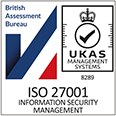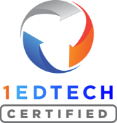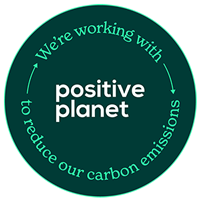Julie-Anne Heise, from Avondale University on ‘Evolving Placement Practice in Teacher Education’ .his recording is from our 2022 Brisbane, Australia MiniBash community event. Videos are for educational personnel only and require a live educational email to watch. You can read the video transcript below.
Transcript:
I’ve been so inspired by what I’ve heard already today and what Sally was sharing this morning was really empowering.
But I I just yeah. Thank you for giving me the time. I’m actually a fairly new kid on the block. It’s only been at Avondale PebblePad’s only been at Avandale for about four years, and I’ve really only been using it for nearly two years.
But so, basically, my story is going to be a bit different to what we’ve been hearing in that I’m going to share my journey with Pebel pad and focus particularly on what we’re doing for our TPA.
So our our journey with PebblePad began almost accidentally.
From necessity, we well, the Australian government or whoever the body was, decided that all teacher education providers needed to create an assessment that was more comparable and able to be benchmarked between teacher education providers.
And so this became this became known as the teacher performance assessment, the TPA, which I’ll refer to it, and it asked teacher education students to conduct a case study during their final placement, to collect varying forms of evidence of practice and to reflect on the impact of their teaching on student learning with the goal of refining their next lessons.
So Peter, who I’ll introduce you to now, met up with John down at the University of Tasmania and quickly was introduced to PebblePad. And he in Peter instantly believed that this has to be the way we do our TPA.
So we thought we were joining a collective, a syndicate with the University of Kasmania, but that particular TPA wasn’t endorsed by the expert advisory.
So we joined another syndicate consortium with a few other providers mostly in New South Wales.
And this one was endorsed.
The other providers are not using PebelPad, but Peter was convinced that pebblepad was the way to go, particularly given what the TPA is asking. It’s wanting reflective practice, and Peter was convinced as our new PebblePad champion that it was the way to go, that it provided the scaffold for reflective practice.
So we did this. He created our first PebblePad workbook for the TPA in time for our mid year placements for our final year students in twenty nineteen, and he was shocked at how well it went.
Where he was. That’s the truth of it.
And so because of Peter kind of bringing PebblePads through what he perceived to be a necessity to Avondale with this new wretched TPA, that’s how we all felt about it at the time.
And the perceived success, others throughout the university started to take it on. And So it’s going into other schools. We’re still very new in this, and we are a small university.
And so when I say it’s spreading to other schools. I’m not talking huge numbers, but there’s definitely people within each of the schools who are using it. Nursing is probably our biggest user of it. They use it for all of their clinical practice, and it’s really impressive what they are doing there.
So our journey of experimenting was slow at first, and it’s still probably slow, but it’s increasing in speed and saturation throughout the university. And so I’m going to focus very briefly on my personal journey, and then I’ll show you what we’re doing with the TPA.
I started off very enthusiastic. I was so excited. I love new tech, and I just oh, my mind exploded with what I perceived to be the possibilities of what we could do, but then the reality check came in. It’s like, oh, time.
Who has time to try to adopt it in all of those ways, so I took baby steps at first, and just in I was using it in very small ways with my classes initially, and some would say still possibly small ways. I’m only in my second year of using it, but I it has increased.
I got brave last year and got them adding images to a one page activity, which so reading reflections is really the main way I was using it.
And I found that to be giving them only one hundred words because I hope, you know, we have these word counts we have to watch to summarise the whole textbook chapter, and then another hundred words to apply it to their perceived imaginary future teaching context.
And then they needed to find an image that somehow captured the essence of the chapter, I found that that was in the depth of reflection was incredible.
And they found it very painful at first as I’m sure you can imagine.
One hundred words for a whole textbook chapter, but it certainly forced them to think and to reflect.
So we I’m going to spend the rest of the time focusing on our TPA, During the the first year or so of the TPA, we had increasing reports of how well it was going.
On PebblePad.
And so the the students were coming back just saying such great things. I’m going to unpack those things shortly.
And it was forcing them to think again.
And so instead of what we had been doing where they would print off their placement portfolios, which is many, many pages, We had moved to digital submission of documents, but we’re now using, of course, PebblePad. And so we’ve seen a massive shift in how the students are engaging in their reflective practice particularly.
So I inherited Peter’s originally designed TPA workbook this year when I took on the new role of professional experience placement officer.
And Fortunately, he had already set that up, so I didn’t have to sink my teeth into it all of a sudden in such a massive way.
And so I’m going to this this is just a screen captured just very briefly showing you a few of the pages.
Well, I’m just going to unpack for you just a few of the observable differences that we’ve noticed in our students’ experience on placement, due to doing it through PebblePad.
And we did have some people say, oh, I really can’t see how it works. And as I we’re the only provider in our consortium for the TPA who were doing it on PebblePad.
But we’ve noticed a few areas where we can see a significant difference. We’ve noticed that the quality of their reflection is higher.
They always had to reflect But for some reason, the PebblePad medium is providing the opportunity for deeper reflection. I’ll unpack that a little more shortly. But we’re also finding when we go through the moderation process.
Others have commented that the quality of reflection is higher in our TPA’s compared to the others. And that is astounding. We we didn’t really know what to make of that at first until we started reflecting on, well, what’s PebblePad doing for us again? And and then we came to these conclusions.
And so I’m going to share with you probably my most favourite feature of PebblePad for our TPA portfolios.
And that is the PebblePocket. Don’t know how many of you use that.
We can’t do a strict audio record. They have to do a video to be able to upload their audio reflections, which means they, in schools, have to turn their phones over to make sure they’re not capturing students.
So we get a a blank video, but at least they’re doing it.
And so our students are finding that their phones have now become one of their greatest assets on placement.
And we’re when they get the appropriate permission from a school, because typically they meant to turn it off and not use it again until they leave. But with the appropriate permissions from the school that they’re doing their placement at, they’re finding that they can immediately record a reflection straight after the class.
And by speaking it out, it accesses something within them that if they’ve taken the time to type, they might have gotten lost.
So we’ve had some students say this.
I love that I can walk out of the classroom after a lesson and open the app and record my reflection and upload it to pebble pads straight away.
And then we had another student say, I find that I don’t have time to reflect on my day and lessons until I’m driving home.
I’ve had some amazing thoughts come to mind.
One time, I even had to pull over so I could capture my reflections into the app, it would have been so annoying if I had lost these ideas by waiting until I got home, got out my laptop and typed it up.
And so this, as I said, this leads to deeper reflection and deeper growth into their future teaching, which is what the TPA is all about.
They can upload multiple types of media and they really like that too. I’m just conscious of time.
So we have found that we can mentor the student far more meaningfully on placement.
They can be anywhere in the country because we have students go all all around Australian.
And they can call us. So I’m really not sure what to do in this particular space.
So we can look at their live workbook with them wherever they are. And provide that deep relevant feedback for them at that point.
So was this an easy shift for us It was for the students. We first allowed a few tutorials to teach them how to use it. It turns out they only needed half an hour at the most, Very easy for them. They really enjoy it.
They find it it’s natural, it’s intuitive for them. So that leads to us The academics. Was it easy for us? Well, I’m going to say yes for the most part for those of us who’ve taken it on.
But As Peter said to me at first, love, where do I start? He just said, just play with it. You can’t break anything.
And I loved that because it did give me the opportunity. Well, it freed me to really have a go. And so we’re mentoring each other as we try new things and we compare notes, and we’re finding that we are able to yeah, try new things in our own space because of what someone else has shared. So we had a super simple beginning.
And we’re still in the early stages. I will admit, of course.
But we are enjoying the process, and the evidence is out that our students are enjoying it as well.
And we’re working towards currently well, what I’m my vision right now is to step into the space where we can use a mappable workbook that they that it’s basically what Sally was saying this morning. I loved what you’re saying. Where it they pick it up in their first year. It’s match to the graduate teaching standards and to our course outcomes.
And any activity, any asset, any resource, anything that they do, they can then, of course, map And then at the end of the day, when they leave with their alumni account, they have this workbook that’s matched to all standards as evidence. For any potential employer.
And of course, there’s evidence of their deep reflective practice and the the journey of growth with that.
So I caught the pebble pad vision fairly quickly. I learned that you start small, you have a go, You can’t break it.
And if you do think you’ve kind of messed it up, PebblePad can find it for you. It’s still there. It’s okay.
So as Peter said, just have a go, you can’t break anything.
Thank you.







